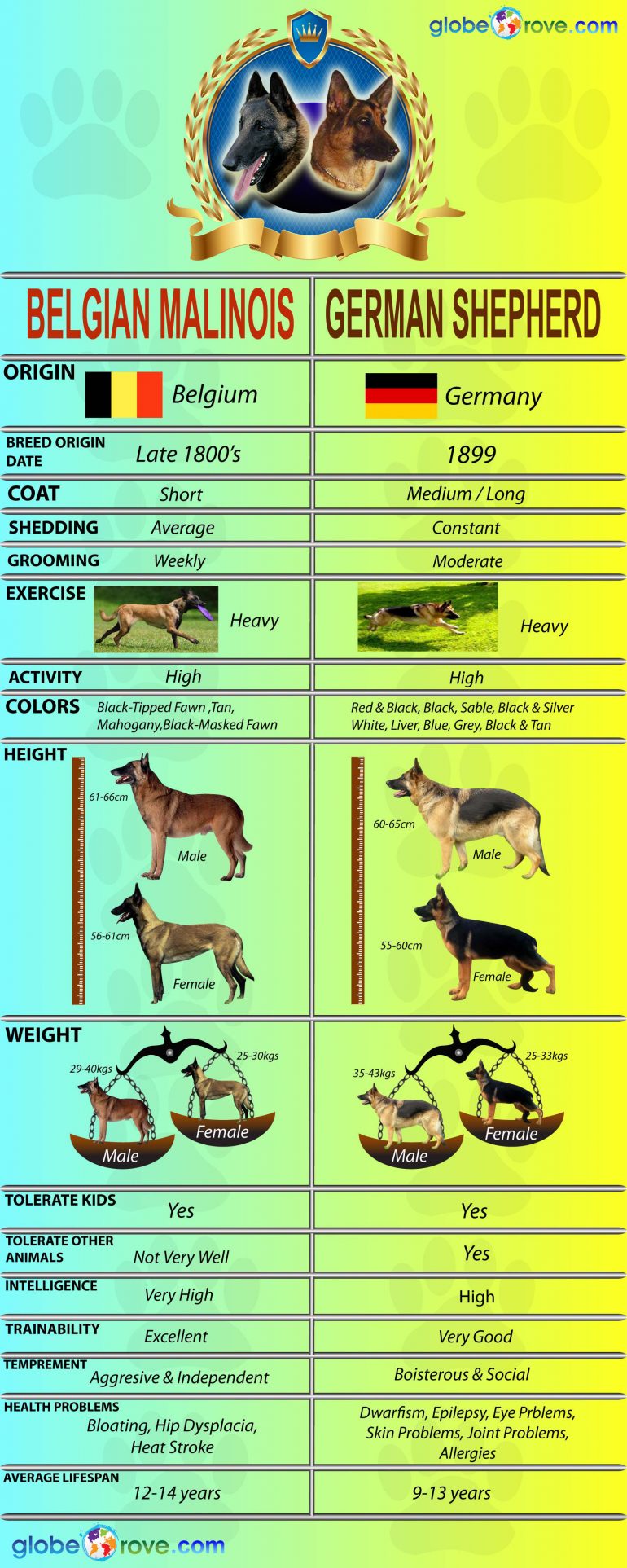
When it comes to choosing a loyal, intelligent, and versatile dog, two breeds often come to mind: the German Shepherd and the Belgian Malinois. Both breeds are renowned for their working abilities, making them popular choices for police work, search and rescue, and as family pets. But how do these two breeds compare? This article will provide a detailed comparison of the German Shepherd and the Belgian Malinois, highlighting their differences and similarities to help you make an informed decision.
Origin and History
German Shepherd
The German Shepherd, also known as the Alsatian, was developed in Germany in the late 19th century. Max von Stephanitz, a German cavalry officer, is credited with creating the breed by selectively breeding dogs for intelligence, strength, and working ability. The breed quickly gained popularity for its versatility and has been used in various roles, including herding, police work, and as service animals.
Belgian Malinois
The Belgian Malinois is one of four Belgian sheepdog breeds, named after the city of Malines in Belgium. Developed in the late 19th century, the Malinois was bred for herding and protection work. It is known for its agility, high energy levels, and strong work ethic. The breed has become increasingly popular in recent years for police and military work due to its speed, precision, and trainability.
Appearance
German Shepherd
German Shepherds are large, muscular dogs with a distinctive appearance. They have a double coat that can be medium to long in length, with colors ranging from black and tan to sable and black. Males typically weigh between 65-90 pounds and stand 24-26 inches tall, while females weigh 50-70 pounds and stand 22-24 inches tall.
Belgian Malinois
Belgian Malinois are slightly smaller and more streamlined than German Shepherds. They have a short, dense coat that is usually fawn to mahogany with a black mask. Males typically weigh between 60-80 pounds and stand 24-26 inches tall, while females weigh 40-60 pounds and stand 22-24 inches tall. The Malinois has a more refined and athletic build compared to the German Shepherd.
Temperament
German Shepherd
German Shepherds are known for their intelligence, loyalty, and protective nature. They are highly trainable and excel in obedience, agility, and various canine sports. German Shepherds are often described as confident, courageous, and steady. They make excellent family pets and are good with children, although their protective instincts can sometimes make them wary of strangers.
Belgian Malinois
Belgian Malinois are also highly intelligent and trainable, with a strong work ethic and high energy levels. They are known for their drive and determination, which makes them excellent working dogs. Malinois are often described as alert, confident, and independent. While they can be affectionate with their families, they require plenty of physical and mental stimulation to prevent boredom and destructive behavior.
Training and Exercise
German Shepherd
German Shepherds are eager to please and respond well to positive reinforcement training methods. They require regular exercise and mental stimulation to stay happy and healthy. Daily walks, playtime, and training sessions are essential for this breed. German Shepherds excel in obedience training, agility, and tracking.
Belgian Malinois
Belgian Malinois are extremely active and require significant exercise and mental stimulation. They thrive in environments where they have a job to do and can become bored and restless if not properly engaged. Training should be consistent and challenging to keep their sharp minds occupied. Malinois excel in agility, obedience, protection work, and other canine sports.
Health and Lifespan
German Shepherd
German Shepherds are generally healthy dogs, but they are prone to certain genetic conditions such as hip and elbow dysplasia, degenerative myelopathy, and bloat. Regular veterinary check-ups and a healthy diet can help prevent some of these issues. The average lifespan of a German Shepherd is 9-13 years.
Belgian Malinois
Belgian Malinois are also relatively healthy, but they can be prone to hip and elbow dysplasia, progressive retinal atrophy, and other genetic conditions. Regular health screenings and a balanced diet are essential for maintaining their health. The average lifespan of a Belgian Malinois is 10-14 years.
Suitability as Family Pets
German Shepherd
German Shepherds make excellent family pets due to their loyal and protective nature. They are good with children and can adapt well to family life if properly socialized and trained. However, their protective instincts may require careful management around strangers and other animals.
Belgian Malinois
Belgian Malinois can also be good family pets, but they require an active household that can provide the necessary physical and mental stimulation. They may be less tolerant of young children and other pets due to their high energy levels and drive. Proper socialization and training are crucial for integrating a Malinois into a family setting.
Conclusion
Both the German Shepherd and the Belgian Malinois are exceptional breeds with unique qualities. The German Shepherd is a larger, more versatile breed known for its loyalty and protective nature, making it an excellent family pet and working dog. The Belgian Malinois, with its high energy levels and strong work ethic, excels in demanding roles such as police and military work.
Choosing between these two breeds depends on your lifestyle, experience with dogs, and the amount of time you can dedicate to training and exercise. Both breeds require committed owners who can meet their physical and mental needs, ensuring they lead happy and fulfilling lives.




